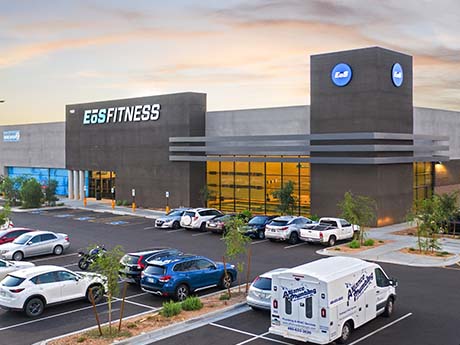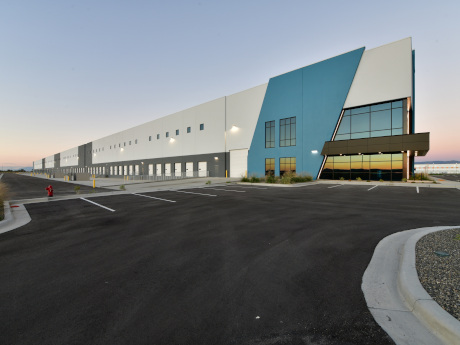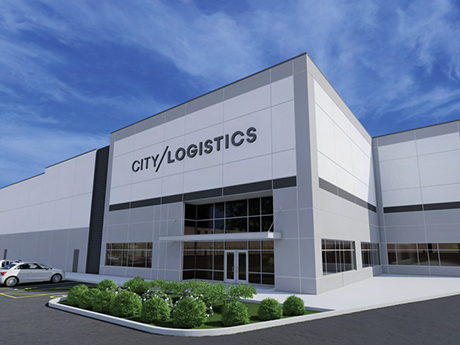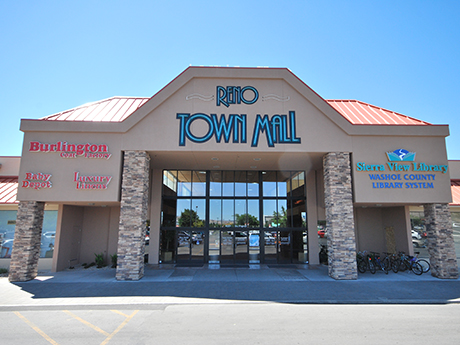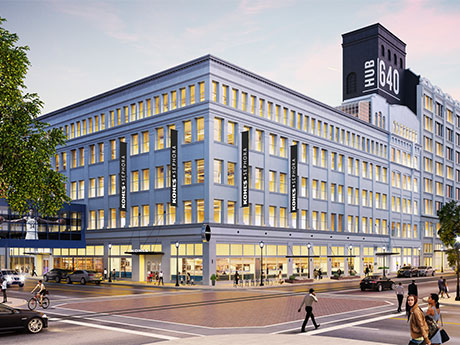By Jason Baker, principal at Baker Katz When a national retail or restaurant brand acquires another prominent national name, the move might initially seem to make a great deal of sense — especially when there are clear similarities between the two brands. Ultimately, however, what makes these high-profile transactions successful may turn out to be less about brand synergy and more about market dynamics and commercial real estate leverage. Accepting that premise in turn raises some interesting questions about the role that these types of acquisitions and brand conversions might play in an increasing competitive commercial real estate landscape. Those questions are especially relevant in places like Texas, where retailers looking to expand or move into new markets may view the acquisition and conversion of struggling retail brands as a viable strategy. From fitness concepts to coffee chains, there may be opportunities retailers can leverage to find quality retail spaces in otherwise occupied marketplaces. Some of these acquisitions have already taken place. However, questions remain about how much of a role these conversions may play in Texas markets. The phenomenon is hardly a new one, but it does seem like a noteworthy trend for industry analysts, retailers and brokers alike …
Market Reports
— By Wick Udy, Senior Managing Director, JLL — Salt Lake City’s industrial market continued its exceptional performance in 2022. Last year was the third consecutive year of above-average leasing and the second-highest volume of annual absorption on record. The largest volume of completions was recorded in 2022 with 13 million square feet delivered. However, leasing and absorption volumes were both below 2021 levels, which is something industry leaders are watching in 2023. Developers were forced to push pause on new building projects toward the end of 2022 due to rising interest rates and tighter capital markets. Because of this, JLL predicts 2023 could be the year of the sublease. What was a landlord-favorable market for many years is slowly leaning toward a tenant-favorable market. Based on current activity within the marketplace, absorption should be positive in first-quarter 2023. Companies are signing leases on existing buildings instead of waiting for new builds, which will keep vacancy low for the foreseeable future. The market has remained as robust as it has because companies from California are relocating to Salt Lake City. They want to take advantage of its affordable real estate, quality of the workforce and the market’s proximity to large …
National headlines report Amazon, arguably the largest warehouse user in the country, curtailing demand and, in some cases returning space back to landlords. This is sandwiched by stories detailing rising interest rates and land prices, stricter entitlement guidelines and NIMBYs working to apply the brakes on new developments. But, in “The Land of Pleasant Living,” (a Baltimore nickname made popular by the smart advertising of a local beer), the industrial revolution continues. And, for good reason. More than 2.3 million square feet of industrial/warehouse space was leased in the greater Baltimore metropolitan region in fourth-quarter 2022, with a net absorption of more than 1.2 million square feet of space, contributing to an overall vacancy rate of 4.5 percent. Additionally, more than 13 million square feet of space is currently under construction and rents have soared more than 50 percent over the past two years, with an average rent of just under $8 per square foot in late 2022. Significant leases signed in fourth-quarter 2022 included Baltimore International Warehousing & Transportation’s 244,304-square-foot lease at 5250-5330 Holabird Ave.; Amazon’s 241,962-square-foot lease at 1713 E. Patapsco Ave. and the 168,655-square-foot lease executed by Transdev at 1610 Wicomico St. Baltimore is contained within …
— By Tad Loran, Vice President, Retail Specialist, Avison Young | Western Alliance Commercial — The Northern Nevada retail market has been performing well. New tenants are entering the marketplace and the area experienced positive absorption. Rental rates have increased for the year, but there has been a decrease in commercial sales due to higher interest rates. The retail vacancy rate is currently at 4.7 percent, while asking rental rates are at $1.70 per square foot on a monthly basis. Many submarkets have shown improvement, including South Virginia, Meadowood, South Reno and the North Valleys. Tenants that have recently entered or are expanding in Northern Nevada include Colombia Sportswear, Voodoo Brewing Company, Jamba Juice, the Human Bean, Starbucks, Cracker Barrel, Mountain Mike Pizza, Pet Station, Take 5 Oil Change, AutoZone and Five Below. Tenants with closures include Bed Bath & Beyond, Sizzler Steakhouse, Food Source Grocery Store, Campo, California Pizza Kitchen, Long John Silver’s, Rounds Bakery and Claim Jumper. Unemployment in Nevada fell to 3.4 percent in December 2022. This low unemployment rate has led some prospective new businesses to either delay or cancel expansion plans in this region. From a development perspective, Reno has many new projects in the …
By Tony Colvin and Michael Fitzgerald, Mid-America Real Estate In the absence of significant new construction, the evolution of the retail real estate market in Milwaukee is largely being driven by the conversion and demolition of existing spaces. Some prominent places are being reimagined in creative ways that often include multifamily and other uses in addition to retail. HUB640 in downtown Milwaukee is a perfect example. A historic building formerly occupied by a Boston Store, the property is being transformed by North Wells Capital and Urban Innovations Management. The new mixed-use project will feature Kohl’s as the retail anchor tenant, loft apartments and office space occupied by Fiserv’s corporate headquarters. Other corporate office users, including Milwaukee Tool and Northwestern Mutual, also are betting on the central business district (CBD), with Milwaukee Tool relocating upwards of 1,200 employees, and Northwestern Mutual redeveloping and enlarging its headquarters. At the same time, new multifamily high-rises are remaking the architecture of Milwaukee including the river and lakefronts. The 25-story Ascent opened last year, and 333 North Water (31 stories) and Couture (44 stories) are on the horizon. Additionally, Iron District MKE is an 11-acre mixed-use sports and entertainment development slated to be phased in …
— By Rawley Nielsen, President of Investment Sales, Colliers — Salt Lake City’s multifamily market will continue to stand out and impress in 2023…even with so much uncertainty, ongoing readjustments within the market and many investors at a stay. That’s because Utah continues to receive outsized investor interest that will maintain stability in pricing. Investors recognize overall performance at property levels remains healthy as the state continues to be a leader in population growth. Utah is also one of the top states for outstanding job creation, increased demand for housing and exponential rent growth. While multifamily investment sales volume was record-setting during the first half of 2022, we have seen volume taper dramatically in recent months. This is due to rising interest rates and a lack of clarity in the debt and equity markets that have impacted pricing. Much of this slowing can be attributed to the rising cost of capital and low leverage caused by debt service coverage ratio (DSCR) requirements. (See Tables 1-3) Overall, 2022 saw an average cap rate of 3.75 percent, decompressing over 20 basis points compared to the first half of the year. Cap rates are expected to expand further through 2023 as uncertainty in …
Retail is not dead. In fact, coming out of COVID-19, retail is arguably the strongest that it’s been in many years. According to S&P Global Market Intelligence data, in 2022 we saw a 13-year low in retail companies filing for bankruptcy. Here in Baltimore, we’re seeing extremely low vacancy rates and steady demand, which in turn, is cultivating a competitive environment. However, despite the challenges that retail has faced over the past several years, its resilience is where we continue to find plenty of reasons to be optimistic. A look back In March 2020, the phones stopped ringing and businesses shuttered for what was anticipated to be a few short weeks. We soon came to find that was not the case. Retail did struggle, significantly in some cases. Restaurants, service-based businesses, soft goods, fitness, entertainment and experiential concepts amongst many others, whether large corporate-owned or mom-and-pop users, struggled to stay afloat. And many did fail. Space came back on the market and concepts dwindled at an uncanny pace. But the so-called “retail apocalypse” — a common phrase that was originally coined because of the increased popularity of e-commerce — was, again, proved to be hyperbole. Retailers sought ways to enhance …
— By Baker Krukow, Senior Advisor, Industrial, Dickson Commercial Group — The Reno-Sparks industrial market is expected to remain active in 2023. It has a hefty pipeline of proposed industrial projects, steady increases in rental rates and a direct vacancy rate below 2 percent. The lack of available product has remained a challenge for tenants looking to occupy space, while landlords have been able to benefit from competing offers. The result of these tight market conditions will continue to push industrial development throughout the year. There was roughly 5.4 million square feet of new industrial product delivered in 2022, with 76 percent of those projects being speculative developments. A vast majority of those spec projects were pre-leased prior to completion. Looking at 2023 new construction, developers are dealing with severe winter weather delays. As a result, several projects have had to push back their completion timelines. Amongst some of the anticipated industrial projects under construction are Dermody Properties’ LogistiCenter at I-80 West Phase II, which will contain two state-of-the-art distribution buildings totaling 429,000 square feet. In the Sparks submarket, Panattoni Development has broken ground on the Pyramid Pointe Commerce Center, a 195,000-square-foot, Class A flex/bulk building, which will demise to …
By Eric Rose and Erick Tjarks, Cresa The Omaha office market proved to be somewhat insular from the effects of the many factors the real estate industry has experienced since 2020 (COVID-19, the hybrid work-from-home model, discussions of impending recession to name a few). Although down year-over-year, which given the recent interest rate hikes is expected, market sales volume remains above-average over the surveyed period going back to 2007. Though, this transaction volume dropped precipitously in the second half of 2022 and has continued to be slow in early 2023. However, the local market has seen pockets of increased activity, as Northwest Omaha saw heightened transactional volume, with Midtown Omaha, downtown Council Bluffs and suburban West Dodge following suit. As showcased above, market cap rates have largely accounted for interest rate hikes and are currently stable but subject to future interest rate increases. These statistics all point to a stable market, with fundamental performance on solid footing. However, it should be noted that, according to CoStar, 2022 is only the second year on record when demolitions outpaced gross deliveries, with only 93,000 square feet of net deliveries Omaha ranked in the bottom 10 of the top 60 office markets …
By Taylor Williams Office owners have spent the last two-plus years undertaking every creative measure they can fathom — and afford — to get tenants and their employees to legitimately want to come back to their buildings. From investing in upgrades to physical amenities to hiring hospitality-minded professionals for property activation to offering personalized incentives, nothing has been out of bounds when it comes to recouping occupancy. Enough time has now passed such that owners can judge the extent to which their ideas and initiatives have worked. Of course, the goalposts for what defines success in the office sector have shifted radically during that time. Profit margins and forecasts have shrunk as 60 to 70 percent occupancy three to four days a week now starts to look pretty good, all other factors being held equal. It’s simply a different world. “We are never going back to pre-pandemic ways,” says Ami Figg, senior leasing specialist at Houston-based Hartman. “What COVID-19 has done for the office market is equivalent to what September 11 did for the travel industry. There will always be a need for traditional office space, but it’s changed forever, so it’s upon us as landlord and tenant reps to …


